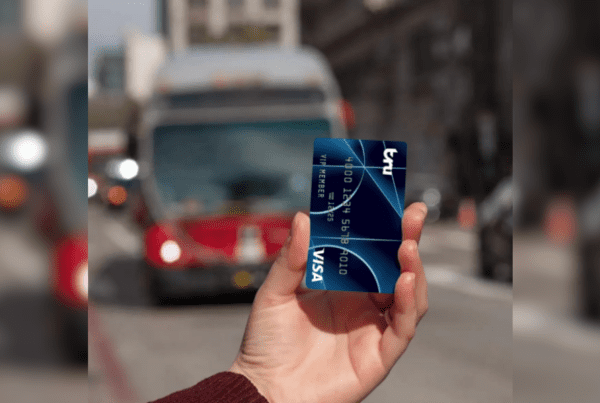
When you think about getting rewarded at work, a raise or holiday bonus may come to mind. But there are many different ways to reward your employees based on their preferences, personal interests, goals, and career aspirations. Ultimately, choosing the right rewards can increase employee engagement, enhance productivity, and reduce unwanted turnover.
What are intrinsic rewards?
Intrinsic rewards cater to people who find motivation within themselves. These types of employees may be driven by the satisfaction of finishing a project, developing strong relationships with coworkers, or deepening their knowledge about a topic. People also succeed more at work when their values align with their company’s ethos.
What are extrinsic rewards?
On the other hand, extrinsically motivated people respond better to rewards given by an outside source, which is typically management. Extrinsic rewards are more tangible and are usually related to an employee’s status or hold financial value, such as promotions or gifts. Both extrinsic and intrinsic rewards have vast benefits when used correctly, so here are examples of rewards to offer at work.
Examples of intrinsic rewards in the workplace
- Creating a positive workplace culture
- Giving generous recognition and praise
- Giving employees autonomy and trust
- Mastery of new skills or knowledge
1. Creating a positive workplace culture
The feeling of belonging is a powerful emotion associated with inclusive and supportive workplace cultures. When employees feel valued and celebrated by their coworkers, they have more intrinsic motivation to excel at their jobs and reciprocate. One study shows that companies with positive cultures can generate a 33% increase in revenue because they attract top talent and see improved job performance.
The alignment of values between employees and the company also impacts how they embrace organizational culture. Workers who feel a sense of meaning or purpose in their work make more effort to drive success with customers and coworkers. However, culture starts at the top, so managers must first embody their company’s values to reward employees with a supportive workplace.
2. Giving generous recognition and praise
Employees who receive words of appreciation from management or their coworkers are 2.5 times more engaged than those who go unrecognized, and 90% of employees believe that receiving recognition will boost their motivation to work harder at their job. Yet, most companies don’t have an employee recognition or feedback program in place. Giving feedback can take place inf formal or informal settings, like team meetings or coworkers passing each other in the hallway. To start sharing kind words across your organization, check out the popular tools available, such as Nectar and Assembly.
3. Giving employees autonomy and trust
Employees need to know that their employer trusts them to handle their job responsibilities and believe in their abilities or potential to grow in the position. Autonomy is one of the four universal intrinsic sources of motivation because when we have control over our work, we perform better and feel accomplished. Delegating and empowering your staff to own their work gives them opportunities to make decisions and be recognized.
4. Mastery of new skills or knowledge
It’s no surprise that feeling competent at your job is an intrinsic motivator, but it’s a significant factor in long-term career satisfaction and employee retention. Employees who contribute quality work and achieve progress bring immense value to their teams and take pride in their jobs. Since over 75% of workers want more career growth opportunities and offering training can lead to a 24% increase in profits, providing training and development to encourage mastery is a must.

Two young businesspeople in the office at night working late, discussing a project.
Examples of extrinsic rewards in the workplace
- Job perks and flexible work arrangements
- Corporate gifts
- Bonuses
- Wage increases or promotions
- Profit-sharing programs
1. Job perks and flexible work arrangements
The first extrinsic reward is offering added perks to the job, including flextime, job rotations, shorter workweeks, exciting projects, unlimited time off, and work from home policies. One survey found that 88% of workers consider flexible hours when searching for a job, and 80% of them consider remote work options plus vacation time the most.
Providing a complete benefits package is also a powerful reward. Other than salary, benefits can include a company car, comprehensive health insurance, and matching contributions to a pension plan. Many employees value better benefits even more than a pay increase, as they get access to unique perks that not all companies offer, so it’s an effective reward for retaining top talent.
2. Corporate gifts
A gift is a short-term reward typically given as a marker of employee achievement or appreciation to the entire workforce. You’ve probably received a corporate gift before, such as branded pens or notebooks, food packages, or gift cards. Rewards can also be given digitally, such as virtual gift cards for online shopping. Overall, gifts are best for celebrating smaller achievements or seasonal holidays.
3. Bonuses
Usually awarded annually, a bonus is a lump sum, short-term monetary reward. The appraisal process differs between organizations, as some companies guarantee fixed bonuses after a period of employment. Others may base the reward on job performance, which is a more subjective form of measurement.
4. Wage increases or promotions
Pay raises and promotions usually come together; however, not all wage increases come with a promotion. Similar to a bonus, wage increases arrive after a set period, for an impressive change in performance, or a set of new skills.
To earn a promotion, workers must gain the approval and trust of their managers to acquire higher responsibility and seniority. Therefore, employees must know that advancement opportunities are within reach to feel optimistic and put in the extra effort.
5. Profit-sharing plans
Employee profit-sharing plans (EPSPs) are powerful rewards because they connect workers directly to their company’s profits. Each employee is given a part of the quarterly or annual earnings based on a set percentage that’s typically around 2.5% to 7.5%. Profit-sharing encourages employees to adopt a collectivist mentality to work towards the company’s success at large, rather than only focusing on their individual, immediate objectives.




 Nikko Pangilinan
Nikko Pangilinan Ray Forzley
Ray Forzley Diana Marie
Diana Marie Lisette Anciaes
Lisette Anciaes Junius Cheng
Junius Cheng  Aysha Shahid
Aysha Shahid Chris Michaelis
Chris Michaelis Mira Tzur
Mira Tzur Jamie Rust
Jamie Rust Dianne Dickens
Dianne Dickens Roy Murad
Roy Murad Huguette Masse
Huguette Masse Lauren Weekes
Lauren Weekes